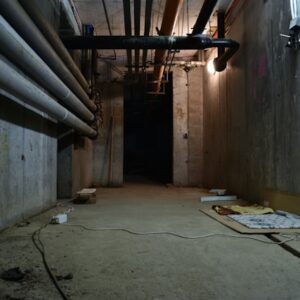Table of Contents:
- Introduction to Biosafety Cabinets
- Types of Biosafety Cabinets
- The Role of Biosafety Cabinet Testing
- Understanding the Certification Process
- Critical Aspects of Biosafety Cabinet Tests
- Achieving and Maintaining Compliance
- Challenges in Biosafety Cabinet Testing
- The Impact of Proper Maintenance
- Innovations in Biosafety Cabinet Testing
- Resources for Further Information and Professional Assistance
Key Takeaways:
- Understanding the critical role of biosafety cabinets (BSCs) in laboratory safety.
- Recognizing the various types and purposes of BSCs and their certification processes.
- Realizing the importance of regular bio-safety cabinet testing for maintaining compliance and protecting laboratory personnel.
- Embracing innovations and best practices in BSC testing and maintenance.
Introduction to Biosafety Cabinets
Biosafety cabinets (BSCs), indispensable in labs handling pathogenic samples, present a controlled environment to manage the risk of exposure to various hazards. These containment units are a primary line of defense, using sophisticated air filtration systems, including high-efficiency particulate air (HEPA) filters, to secure a safe working space. Through maintaining negative pressure and directional airflow, BSCs effectively curtail the potential for airborne contaminants to escape into the lab environment or contaminate research samples.
Types of Biosafety Cabinets
Delving into the specifics, Class I BSCs are designed mainly to protect the external environment and the operator but offer no contamination protection for the manipulated sample. Class II BSCs are more versatile, providing a balanced protection trifecta for the technician, the sample, and the surrounding environment. This class is subdivided further based on airflow patterns, volume, and exhaust systems. The most secure, Class III, is a wholly enclosed ventilated cabinet, extensively used for high-risk microbiological agents and providing the most stringent safety levels via airtight construction.
The Role of Biosafety Cabinet Testing
Bio-safety cabinet testing is not merely a formality but a vital part of their operational lifecycle. Certification through regular bio-safety cabinet testing ensures that these life-preserving pieces of equipment function correctly, adhering to the exacting standards required for the work they facilitate. In essence, testing is a health and safety doctor’s check for BSCs – diagnosing potential problems before they impact the lab’s operation or compromise safety protocols.
Understanding the Certification Process
The certification process for BSCs is rigorous, involving several essential tests replicated under stringent conditions. These tests, governed by agencies such as the NSF (National Sanitation Foundation), ascertain that BSCs perform to their designed specifications. Depending on the organization’s resources, an independent accrediting body or a qualified in-house team usually conducts certification.
Critical Aspects of Biosafety Cabinet Tests
Biosafety cabinet tests include but are not limited to measuring inflow and downflow velocity to ensure proper air balance, integrity testing of HEPA filters to detect leaks or defects, and airflow smoke patterns assessment to visualize air direction and identify turbulence that may compromise safety. The successful completion of these tests affirms the BSCs’ integrity, supporting laboratories in their ongoing commitment to safety and compliance.
Achieving and Maintaining Compliance
Compliance with safety standards is of paramount importance in laboratory settings. After all, the health and well-being of the researchers and the validity of their work are at stake. This means adhering to protocols set forth by organizations such as the Centers for Disease Control and Prevention (CDC) and the World Health Organization (WHO) for biosafety. Rigorous testing schedules and strict maintenance procedures are part of this compliance, contributing to a safety culture and accountability within scientific research.
Challenges in Biosafety Cabinet Testing
The precise nature of bio-safety cabinet testing presents particular challenges, particularly when interpreting complex data or troubleshooting against a backdrop of variant environmental factors. Faced with these complexities, laboratories must rely on trained, experienced professionals who can ensure accurate assessments and implement corrective measures when necessary.
The Impact of Proper Maintenance
Regular maintenance ensures BSCs remain a reliable safety barrier and extend their functional lifespan, representing a significant cost-efficiency for research facilities. Maintenance activities directly contribute to the health and safety landscape of the laboratory by preempting system failures and maintaining filter efficacy.
Innovations in Biosafety Cabinet Testing
The domain of biosafety cabinet testing witnesses continual advancements, from integrating digital sensors and automated systems to breakthroughs in ergonomic design and energy efficiency. These progressions streamline the testing process while enhancing the user experience and ensuring safety remains the priority.
Resources for Further Information and Professional Assistance
Resources such as the CDC’s Biosafety in Microbiological and Biomedical Laboratories and the World Health Organization’s Laboratory Biosafety Manual are invaluable for laboratories seeking to expand their understanding of biosafety cabinet standards and practices. These comprehensive guides detail the regulatory expectations for biosafety cabinets and offer insights into global health perspectives, contributing to a well-informed and safety-conscious scientific community.




